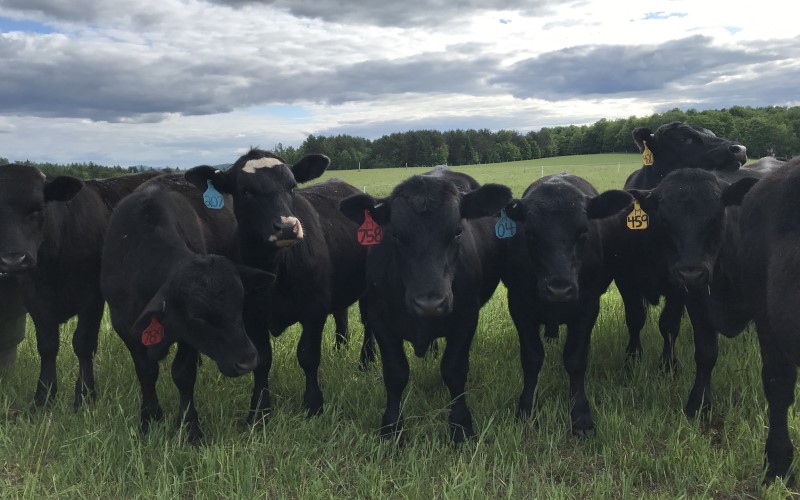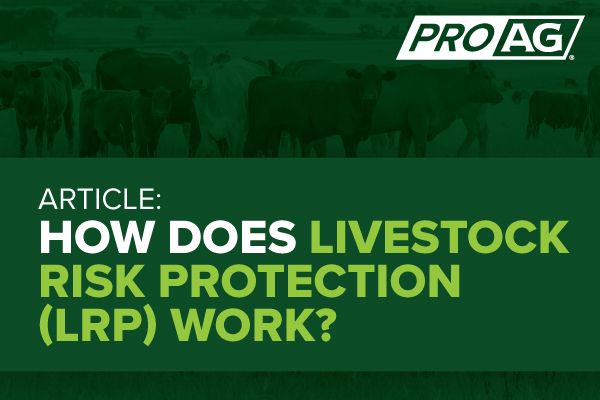Strategic Partnerships for Resilience: Bagley Risk Management
Comprehending Animals Risk Security (LRP) Insurance Policy: A Comprehensive Guide
Browsing the realm of livestock danger security (LRP) insurance can be an intricate endeavor for lots of in the agricultural industry. This sort of insurance supplies a security net versus market changes and unforeseen circumstances that can impact livestock producers. By recognizing the details of LRP insurance policy, manufacturers can make educated choices that may secure their operations from financial threats. From how LRP insurance coverage works to the different coverage options offered, there is much to discover in this detailed guide that can potentially shape the method livestock manufacturers come close to risk monitoring in their companies.

Just How LRP Insurance Coverage Functions
Sometimes, understanding the mechanics of Livestock Risk Protection (LRP) insurance can be intricate, but breaking down how it works can offer clarity for farmers and herdsmans. LRP insurance is a danger monitoring device made to shield animals manufacturers versus unexpected price decreases. It's important to keep in mind that LRP insurance is not a profits guarantee; rather, it concentrates only on rate danger security.
Eligibility and Protection Options

When it pertains to coverage options, LRP insurance coverage offers manufacturers the adaptability to pick the coverage level, coverage duration, and endorsements that ideal match their threat monitoring demands. Coverage levels generally range from 70% to 100% of the expected ending worth of the insured livestock. Producers can likewise pick insurance coverage periods that align with their production cycle, whether they are insuring feeder cattle, fed cattle, swine, or lamb. Endorsements such as rate risk defense can further tailor insurance coverage to secure against negative market fluctuations. By understanding the qualification standards and protection alternatives readily available, livestock producers can make informed decisions to manage danger efficiently.
Pros and Disadvantages of LRP Insurance Coverage
When assessing Animals Danger Defense (LRP) insurance, it is essential for animals producers to weigh the negative aspects and benefits inherent in this threat administration tool.

One of the main benefits of LRP insurance is its capability to give security versus a decrease in livestock rates. Furthermore, LRP insurance uses a level of versatility, enabling producers to customize insurance coverage degrees and plan periods to match their certain requirements.
One restriction of LRP insurance is pop over here that it does not protect versus all types of threats, such as illness episodes or natural catastrophes. It is vital for manufacturers to carefully examine their individual danger direct exposure and monetary scenario to identify if LRP insurance policy is the best threat management device for their procedure.
Comprehending LRP Insurance Premiums

Tips for Optimizing LRP Conveniences
Making the most of the benefits of Animals Risk Protection (LRP) look at this website insurance calls for critical planning and positive danger monitoring - Bagley Risk Management. To maximize your LRP coverage, think about the complying with tips:
Consistently Evaluate Market Conditions: Keep informed regarding market trends and price changes in the animals sector. By checking these variables, you can make enlightened choices concerning when to buy LRP insurance coverage to shield against potential losses.
Establish Realistic Insurance Coverage Levels: When picking coverage levels, consider your production costs, market price of animals, and potential dangers - Bagley Risk Management. Establishing realistic coverage levels makes certain that you are appropriately safeguarded without paying too much for unneeded insurance
Expand Your Protection: As opposed to relying entirely on LRP insurance, think about diversifying your risk management techniques. Combining LRP with other danger management devices such as futures contracts or options can give thorough protection versus market unpredictabilities.
Evaluation and Readjust Protection On a regular basis: As market conditions change, regularly evaluate your LRP protection to ensure it straightens with your current threat direct exposure. Changing protection levels and timing of acquisitions can aid enhance your threat protection method. By complying with these pointers, you can optimize the benefits of LRP insurance coverage and protect your livestock procedure versus unpredicted threats.
Final Thought
In final thought, livestock threat protection (LRP) insurance is an important device for farmers to take care of the economic threats connected with their livestock procedures. By comprehending exactly how LRP functions, eligibility and protection choices, in addition to the advantages and disadvantages of this insurance, farmers can make educated choices to shield their source of incomes. By carefully taking into consideration LRP costs and executing strategies to take full advantage of benefits, farmers can alleviate prospective losses and ensure the sustainability of their procedures.
Animals manufacturers interested in obtaining Animals Danger Protection (LRP) insurance coverage can check out a range of eligibility requirements and coverage choices tailored to their details animals procedures.When it comes to coverage choices, LRP insurance policy offers manufacturers the adaptability to pick the coverage level, insurance coverage period, and recommendations that ideal suit their threat management demands.To understand the ins and outs of Livestock Risk Protection (LRP) insurance fully, understanding the variables affecting LRP insurance coverage premiums is vital. LRP insurance policy costs are figured out by different components, consisting of the protection level picked, the expected rate of animals at the end of great post to read the insurance coverage period, the type of animals being insured, and the size of the insurance coverage period.Evaluation and Change Protection Regularly: As market problems change, regularly assess your LRP insurance coverage to guarantee it lines up with your existing risk exposure.